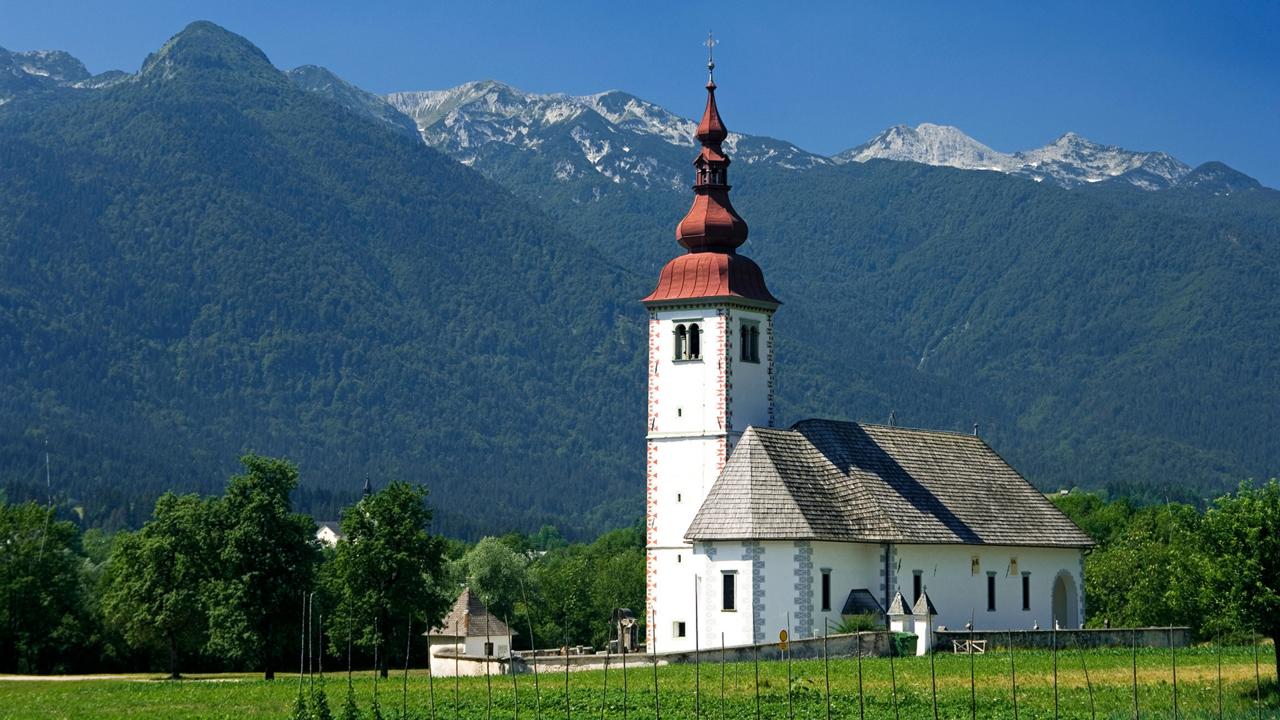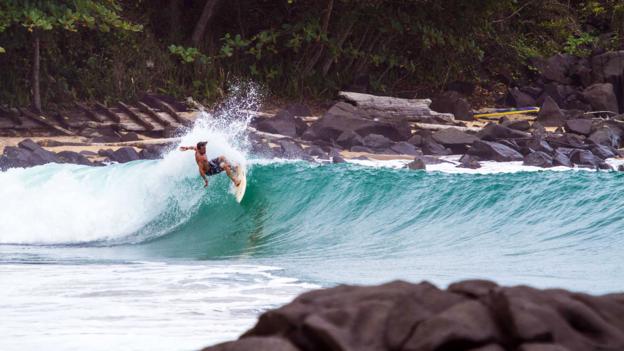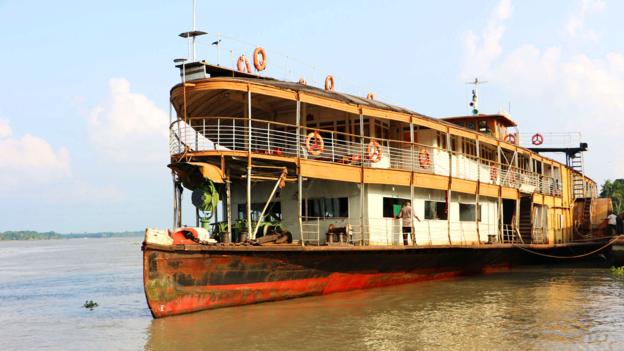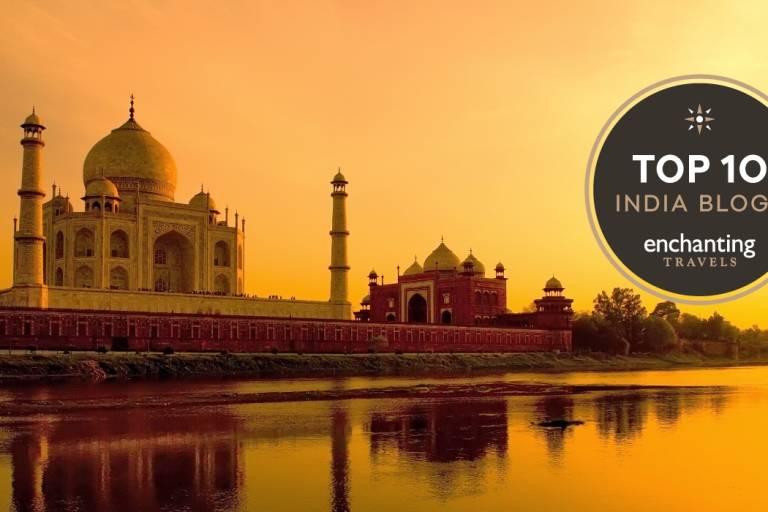

“We have a saying here in Slovenia,” said Grega Silc, a Hike & Bike Slovenia tour guide, as we cycled around the riotous green of the ridge. “In Bohinj, we’re a day or two behind the rest of the world.”
Silc grinned; a day or two is manageable. The lag used to be worse. For centuries, the sheep- and goat-herding villages around the glacial Lake Bohinj were cut off from the rest of Slovenia by poor roads and vertiginous terrain, clustered in the shadow of the Julian Alps. Transport to Ukanc – a hamlet on the far side of the lake whose name loosely translates to “the end of the world” – could take weeks.
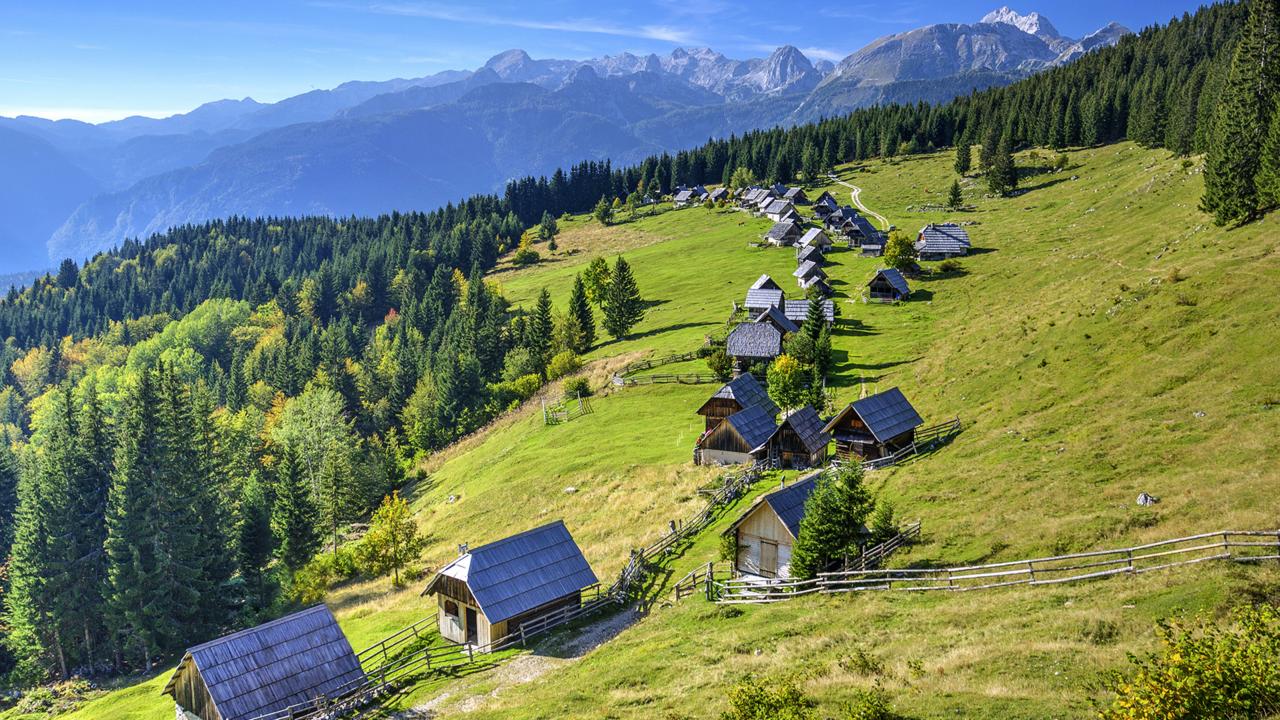
Wooden houses make Bohinj feel timeless (Credit: zkbld/Thinkstock)
However in 1906, during the waning days of the Austro-Hungarian Empire, tunnels were blasted through the mountainside and a railway was added along the water, connecting the northern mining town of Jesenice to the empire’s Adriatic port of Trieste in the south. While the Bohinj region became slightly less remote geographically, it later spent decades as part of communist Yugoslavia, becoming isolated from the rest of Europe politically. And despite Slovenia’s independence in 1991 and admission into the Eurozone in 2007, a deep connection to the past and a slower-paced life remains.
Here, among the wooden houses and open haylofts of Bohinj’s sparse and scattered villages, it’s easy to pretend the Austro-Hungarian Empire has never fallen. Alpine shepherds and cowherds still head to the top of Mount Vogel to graze their livestock on wildflowers. Every September, villagers still celebrate their return on the banks of the lake with folk singing and dancing at the “Cow Ball”.
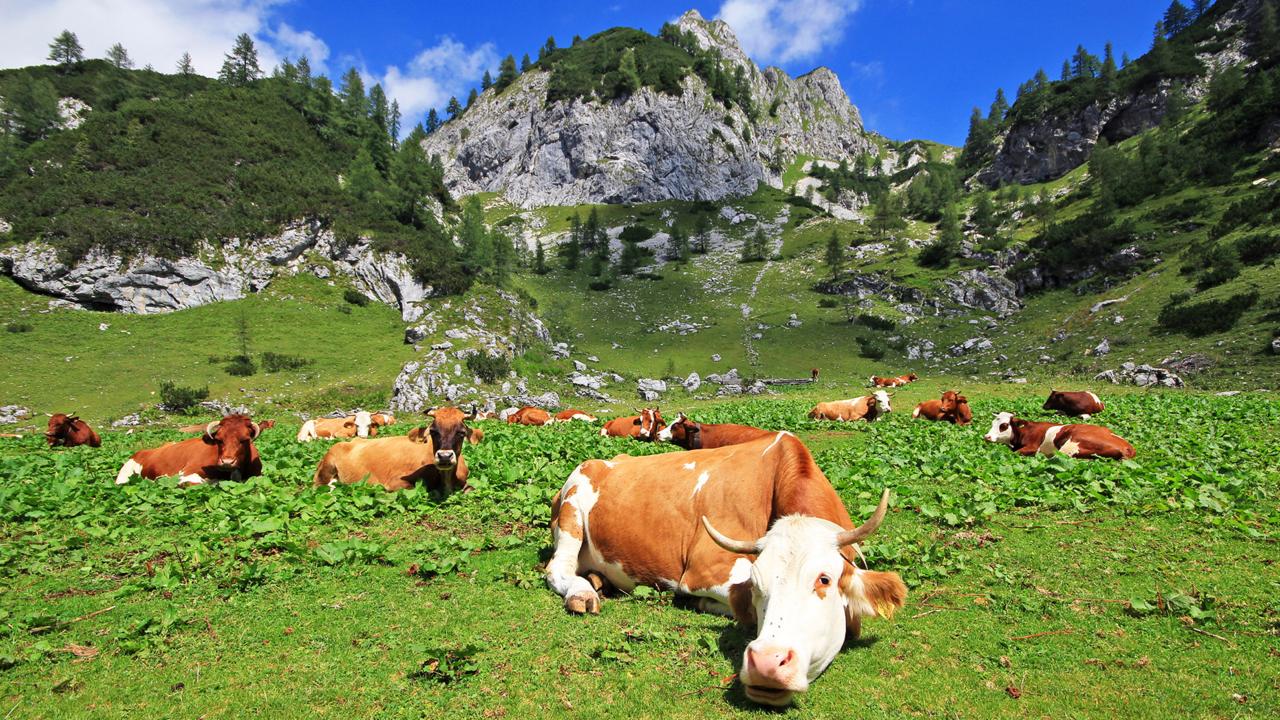
Cows graze in mountain pastures in the Julian Alps (Credit: Jezer Mojca Odar)
On the spring day that Silc and I went cycling through the region, we saw at most a hiker or two on the footpaths or cycle roads. The lake was so still it was impossible to tell where the pine-streaked ridges ended and the waters began. The silence was overwhelming.
In the hamlet of Ribčev Laz, we took a break from peddling and stood at the edge of the lake by the milk-coloured Church of St. John the Baptist. “A mystery”, Silc said. Nobody knows exactly how old it is – it was built sometime before the 15th Century – and no one knows the meaning of the interior fresco: a white devil sits on Cain’s shoulder and the angels have vampire fangs. But, as Silc explained, it was common for Christian dogma to meld with folk traditions in a place as historically isolated as Bohinj.
The age of the Church of St. John the Baptist remains a mystery
(Credit: Barry Mason/Alamy)
Across the bank from the church stands the slender, dark bronze statue of the Zlatorog, or Golden Horn – the magical stag believed to guard the ridges around the lake. In the glint of the afternoon light, it almost looks real. A 20-minute cycle ride from the church, “Devil’s Bridge” spans over a furious gorge. According to legend, the devil built it in exchange for the soul of the first one to cross; however, clever villagers tricked a dog into making the trip. This is a land of stories. It’s the sort of place where one’s imagination might run wild.
We continued to cycle through villages, alpine fields dotted with wildflowers and forests where the branches trellised above our heads. The white of the clouds, soft against the blue of the sky, faded into the snow on the mountaintops. It was the sort of place, I thought, where you can forget any other places exist.

The quiet stillness of Lake Bohinj can feel overwhelming (Credit: Slovenian Tourist Board)
“Agatha Christie used to come here,” Silc told me proudly. “But she never set any of her works here. She said it was too beautiful a place to set any murders.”
And Christie wasn’t the only writer to fall for Bohinj’s charms. Existentialist philosopher Jean-Paul Sartre was a regular visitor to Ukanc. “An existentialist going to the town of the end of the world,” Silc acknowledged. “Makes sense.”
We stopped at the bottom of Mount Vogel, a seasonal ski resort, where a cable car took us to the top. A sign compared the current wait time – 15 minutes – to the six hours or more it took during the days of communist Yugoslavia, when facilities were limited and people queued up at dawn in the hope of a single trip up and down the slope.
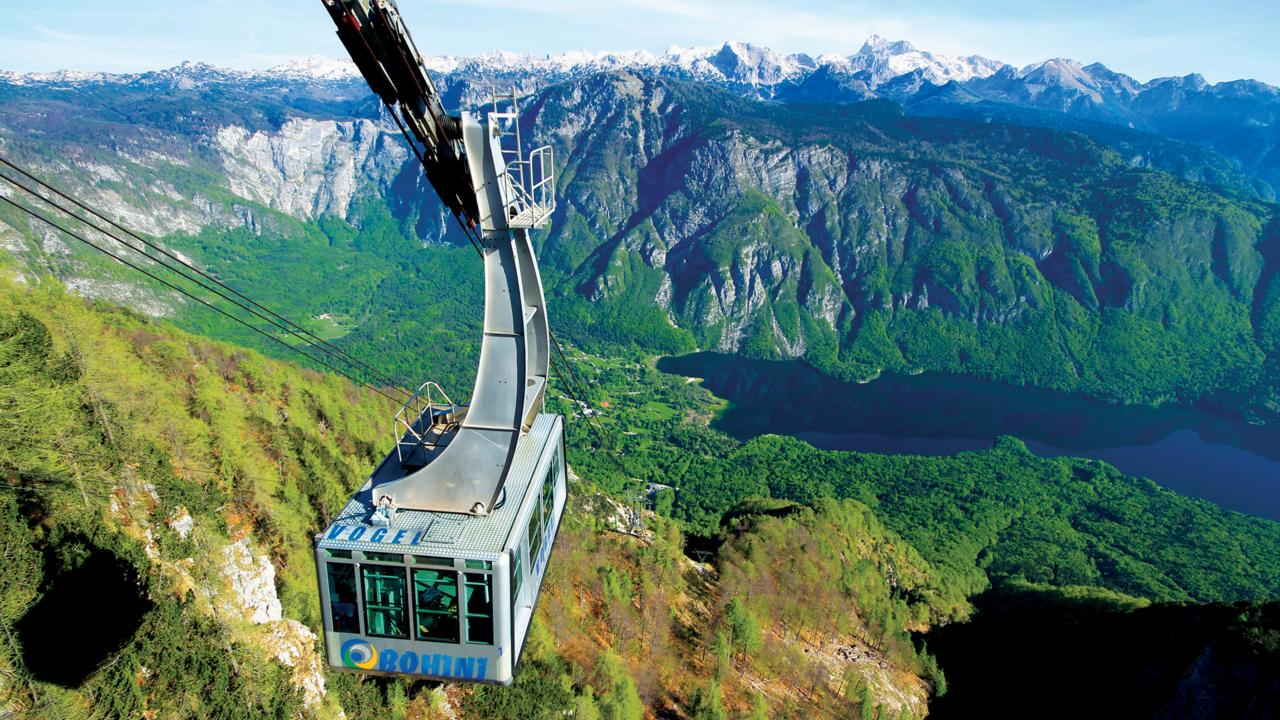
A cable car pulls up to the snow-covered top of Mount Vogel (Credit: Turizem Bohinj)
As the car pulled us upward, forests gave way to bare cliffs. Silc pointed out a goat-like chamoix leaping across the snowdrifts. Spring – or summer – does not exist at the top of Mount Vogel. While people are swimming in the lake, up here, snow shrouds the horizon. Without even the changing seasons to mark the passage of months, time felt slower still.
We sat in the chalet at the top of the cable car, huddled over cabbage stew that had been sharpened with sausage and thickened with beans. Silc ran into two friends – also tour guides – napping against the wood-slat walls while their guests wandered the mountainside.
“A hard life”, one of them winked at me. “I quit. I am going back to the factory – first thing tomorrow.”
The Bohinj region is barely one hour from Slovenia’s capital, Ljubljana, but we hardly noticed. We were in the middle of nowhere, out of season and time – and it was wonderful.

Time stands still as snow shrouds the horizon in the Julian Alps (Credit: Matevž Lenarčič)
[“source -bbc”]

